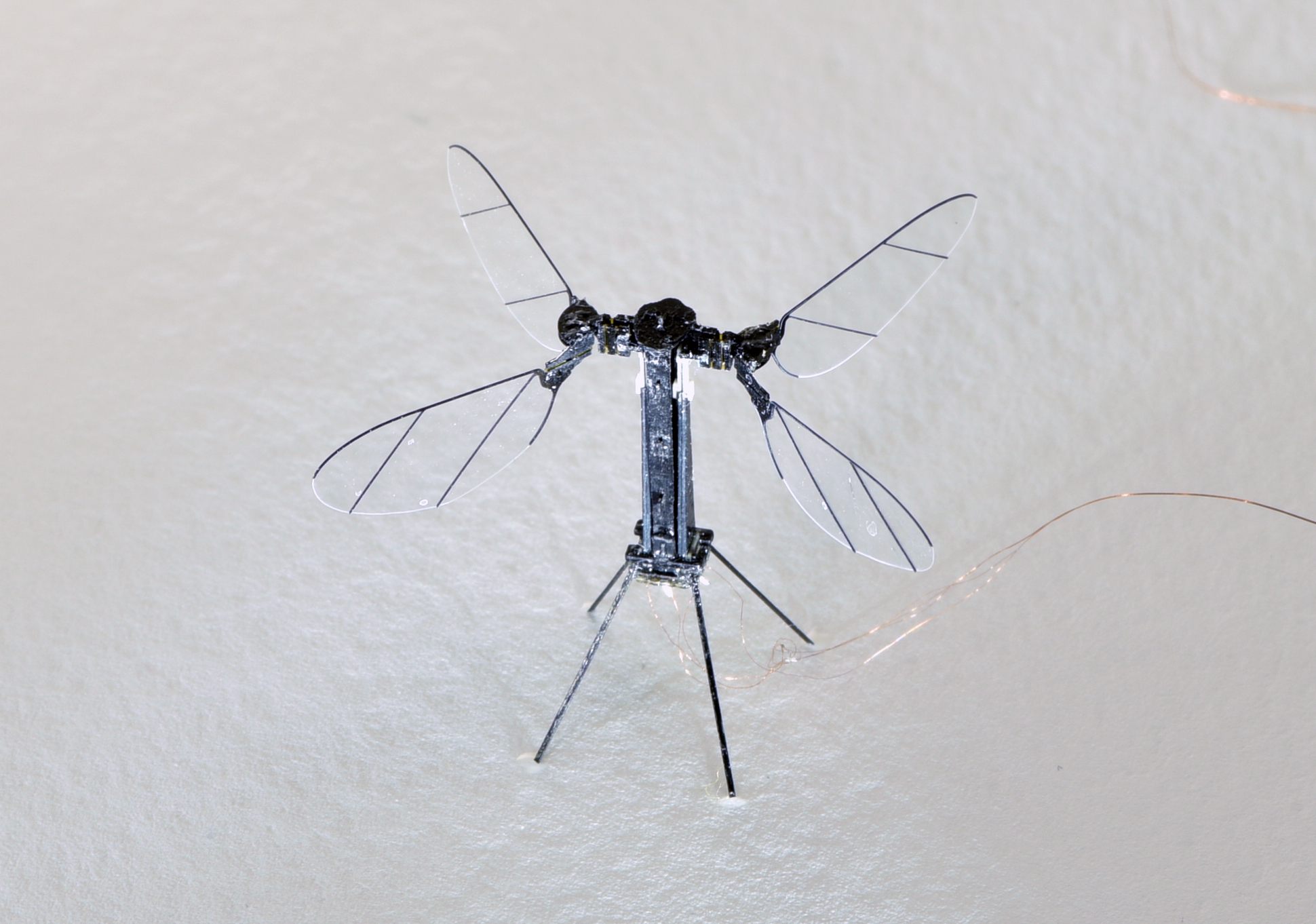A solar-powered robot bee shows how insect drones may take flight

This tiny, solar-powered, bee-like robot could be the future of drones. One day, anyway.
Flying machine: The RoboBee X-Wing, developed at the Harvard Microrobotics Laboratory, is a remarkable feat of microengineering. It is the first insect-size aerial vehicle to fly without requiring a tether, and it uses recent advances in materials and engineering to achieve new power efficiency. A paper describing it appears in the journal Nature today. You can also watch a video of it in action here.
Why wings? Flapping wings have several potential advantages over the propeller blades that give lift to conventional drones. Wings allow for greater agility and maneuverability, and they are both quieter and safer than propellers.
Intelligent design: Flapping aircraft have been built before now, and you can even buy a few toys that flap through the air. But these machines lack any real control, and they have nothing like the power efficiency of a real bird or insect. Indeed, most tiny drones require a tether connected to an external power source in order to fly. The RoboBee instead collects its own power from several tiny solar panels perched above its wings.
Work to do: The RoboBee looks a bit awkward, and it certainly isn’t ready to be commercialized. It requires an intense light source (three times the strength of regular sunlight), and it can only fly for a few seconds at a time. Still, it points to a future when winged drones might weave through buildings and busy urban areas with unnerving ease.
Sign up here to our daily newsletter The Download to get your dose of the latest must-read news from the world of emerging tech.
Deep Dive
Artificial intelligence
Large language models can do jaw-dropping things. But nobody knows exactly why.
And that's a problem. Figuring it out is one of the biggest scientific puzzles of our time and a crucial step towards controlling more powerful future models.
Google DeepMind’s new generative model makes Super Mario–like games from scratch
Genie learns how to control games by watching hours and hours of video. It could help train next-gen robots too.
What’s next for generative video
OpenAI's Sora has raised the bar for AI moviemaking. Here are four things to bear in mind as we wrap our heads around what's coming.
Stay connected
Get the latest updates from
MIT Technology Review
Discover special offers, top stories, upcoming events, and more.